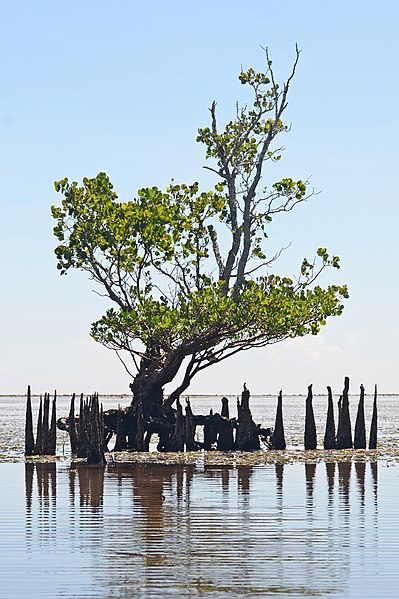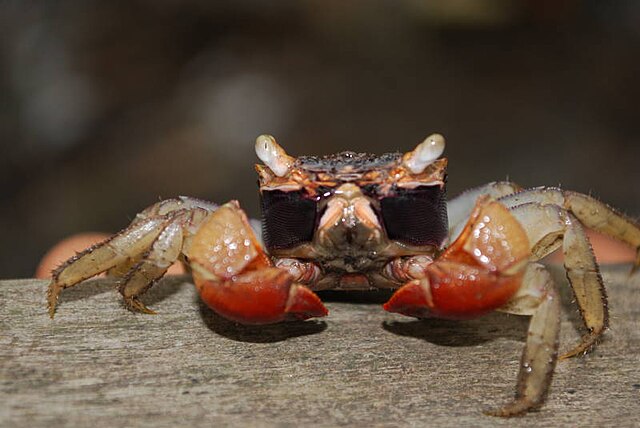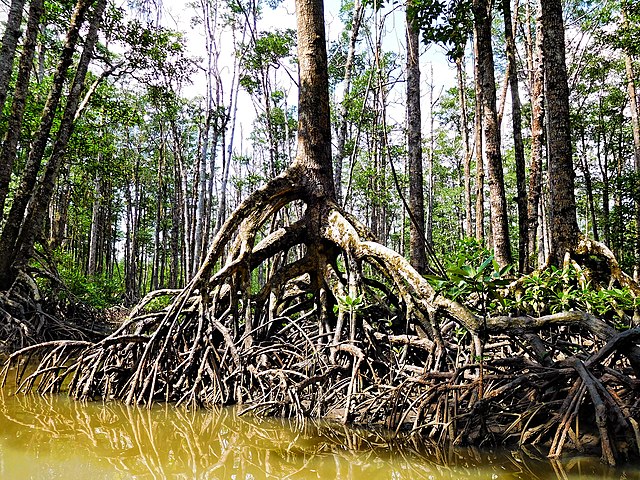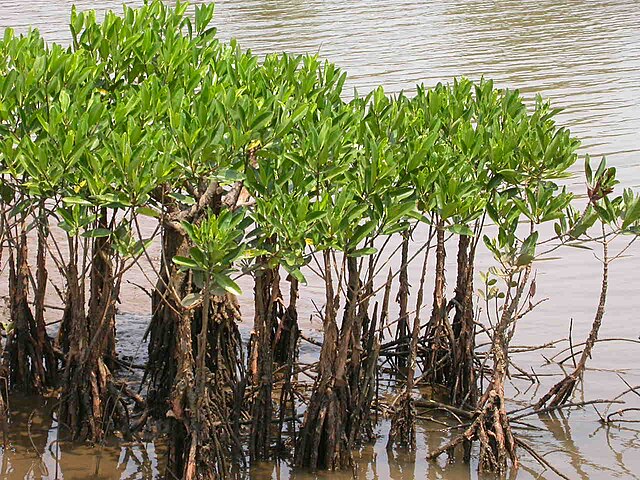Mangrove crabs are crabs that live in and around mangroves. They belong to many different species and families and have been shown to be ecologically significant by burying and consuming leaf litter. Mangrove crabs have a variety of phylogenies because mangrove crab is an umbrella term that encompasses many species of crabs. Two of the most common families are sesarmid and fiddler crabs. They are omnivorous and are predated on by a variety of mammals and fish. They are distributed widely throughout the globe on coasts where mangroves are located. Mangrove crabs have wide variety of ecological and biogeochemical impacts due to the biofilms that live in symbiosis with them as well as their burrowing habits. Like many other crustaceans, they are also a human food source and have been impacted by humans as well as climate change.
Red mangrove crab Neosarmatium meinerti
Mangrove crab
Mangrove crab
A mangrove
A mangrove is a shrub or tree that grows mainly in coastal saline or brackish water. Mangroves grow in an equatorial climate, typically along coastlines and tidal rivers. They have special adaptations to take in extra oxygen and to remove salt, which allow them to tolerate conditions that would kill most plants. The term is also used for tropical coastal vegetation consisting of such species. Mangroves are taxonomically diverse, as a result of convergent evolution in several plant families. They occur worldwide in the tropics and subtropics and even some temperate coastal areas, mainly between latitudes 30° N and 30° S, with the greatest mangrove area within 5° of the equator. Mangrove plant families first appeared during the Late Cretaceous to Paleocene epochs, and became widely distributed in part due to the movement of tectonic plates. The oldest known fossils of mangrove palm date to 75 million years ago.

Mangroves are hardy shrubs and trees that thrive in salt water and have specialised adaptations so they can survive the volatile energies of intertidal zones along marine coasts.
(Acrostichum aureum) fern
Mangrove roots at low tide in the Philippines
Mangroves are adapted to saline conditions








